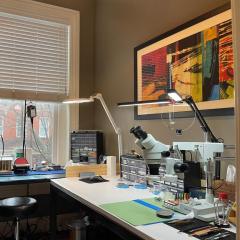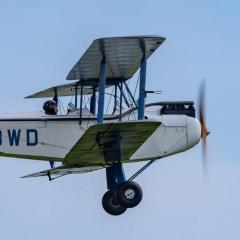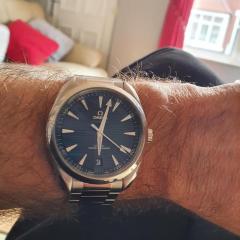-
Recently Browsing
- No registered users viewing this page.
-
Topics
-
Posts
-
By RichardHarris123 · Posted
Hello and welcome fromLeeds, England, it looks like you are well on your way. Multiple accounts are against forum rules, if you give the name on the other account it can be removed. -
By Neverenoughwatches · Posted
That has become habit to quote since learning about electricity as a kid. I'm sure even my old school sparky (74) still uses divisions of 240v to work out current draw and fuse ratings. Uk Rating on my travel kettle averages out at 230volts 😆 -
By mattlikesvintagewatches · Posted
Hello everyone, My name is Matt and I like vintage watches along with pocket watches. I'm very new to the hobby of watchmaking, I've only been tinkering for about 2 months and I'm happy with some of the projects I've salvaged. First I repaired This Waltham 17 jewel 18s and that was fun. Then I repaired this old Zenith movement with 19 jewels. I couldn't find it on the pocket watch database though. Then I repaired this one Lucerne 1 JEWEL movement. It was actually the first watch I got but it was so difficult to put back together with the fiscal amount of tools I had at the time so I just left it strewn in a Ziplock bag. Then My most recent project that came up a total win was this Longines Caliber 19AS, 17 jewels unadjusted. It turned out beautifully in my opinion and was by far the most difficult to reassemble. I am in love with this hobby and its kind of engulfed my personality as of right now. I plan on giving the Longines watch to my uncle, and so right now I'm trying to enjoy that watch the most I possibly can. What I'm currently working on: A Seiko Automatic with a little date window and a weekday function too. I think its the 6309A. Then there is this Omega pocket watch. Unfortunately I lost a little screw that held in the click spring. I'll have to source another one because its tiny and my room is filled with carpet, that thing is gone. Then theres this little tiny Elgin pocket watch. It's fully assembled but the amplitude is low and so I think it needs a new mainspring. Then theres this Waltham 7 jewel movement that I also cleaned and reassembled, but it'll only run facing one way and again with the amplitude being low, I think it needs a new mainspring as well. And finally, I'm working on this gorgeous Grade no.3 1883 Waltham Pocket Watch. It came with a broken balance staff on both sides and would only run when the watch was like sideways, crown to the sky. I'm really excited about that one though, might be worth something. I've chosen to not show the other ones because they're not in movement holders right now, and the Omega is not put together. As you can see, I take these pictures using the flash. Idk why but I like the way the flash makes the metal shine more than just my little lamp. I'm also very eager to find a replacement for that balance wheel; any links would be appreciated. From what I could tell on the Seiko, it's just dirty and It should run if I put it together carefully after cleaning. Also, I fear that that 1883 Waltham may not run too good because of the mainspring, it's probably set because it's so old. I may seek a replacement for that too. I also need to find a crystal for that 18s gold filled Waltham that I've put together. It's just scary having it exposed. I ALMOST FORGOT to mention. Is this Omega real? You gotta turn your head a bit but it does indeed say "OMEGA", so I'm confused. I never knew they made pocket watches. And thats why I'm skeptical. Please let me know. But thats pretty much it. I just wanted to put this out there so that I could begin using the website properly and also to let some people know I exist I guess. Also this is my second account. I know that may violate some rules but I did the introduction wrong the first time and I wanted to fix it by making a new account. Please don't ban this one. Thank you all, -Matt -
Sounds like you and @VWatchie were unlucky. Mine has been running on 230V UK for years ( it's been 230V for many years @Neverenoughwatches, not 240V). Though I have had to re-solder some wires. When I buy cheap Chinese electrical components I often take them apart to check they're not going to kill me. Since the demagnetiser, I bought a cheap fish tank heater for my plating set up. Plugged in, big flash and smell of burning. Deader. So I bought a cheap cup heater plate. Exactly the same - flash, bang, wallop.
-
By musicsnake · Posted
The old crystal is cracked on the edge, and I am looking for something like for like.
-








Recommended Posts